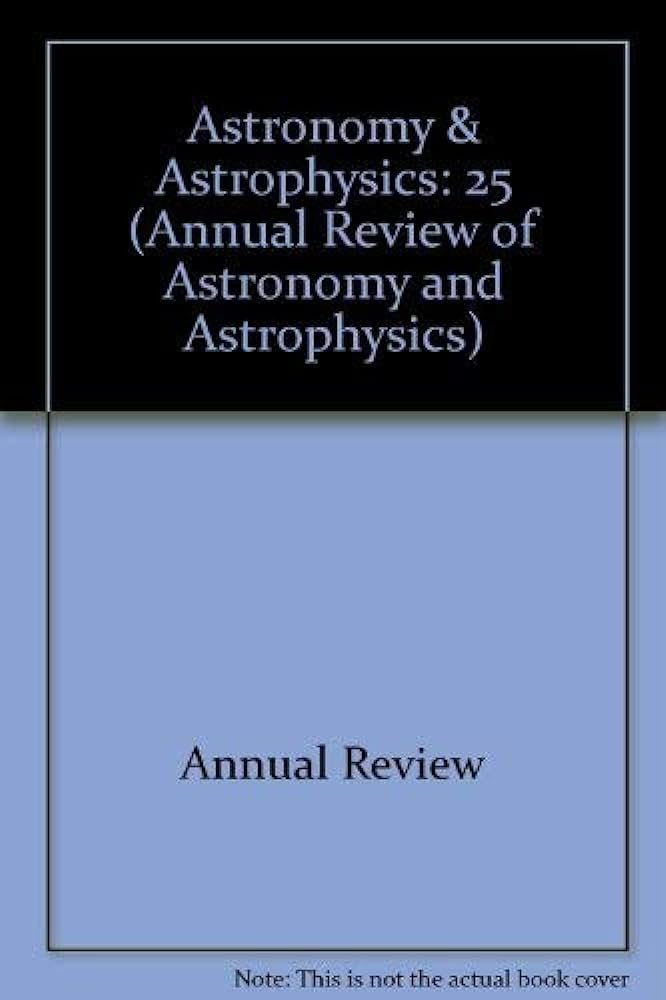The Connection Between Galaxies and Their Dark Matter Halos
IF 32.5
1区 物理与天体物理
Q1 ASTRONOMY & ASTROPHYSICS
Annual Review of Astronomy and Astrophysics
Pub Date : 2018-04-09
DOI:10.1146/annurev-astro-081817-051756
引用次数: 364
Abstract
In our modern understanding of galaxy formation, every galaxy forms within a dark matter halo. The formation and growth of galaxies over time is connected to the growth of the halos in which they form. The advent of large galaxy surveys as well as high-resolution cosmological simulations has provided a new window into the statistical relationship between galaxies and halos and its evolution. Here, we define this galaxy–halo connection as the multivariate distribution of galaxy and halo properties that can be derived from observations and simulations. This galaxy–halo connection provides a key test of physical galaxy-formation models; it also plays an essential role in constraints of cosmological models using galaxy surveys and in elucidating the properties of dark matter using galaxies. We review techniques for inferring the galaxy–halo connection and the insights that have arisen from these approaches. Some things we have learned are that galaxy-formation efficiency is a strong function of halo mass; at its peak in halos around a pivot halo mass of 1012M⊙, less than 20% of the available baryons have turned into stars by the present day; the intrinsic scatter in galaxy stellar mass is small, less than 0.2 dex at a given halo mass above this pivot mass; below this pivot mass galaxy stellar mass is a strong function of halo mass; the majority of stars over cosmic time were formed in a narrow region around this pivot mass. We also highlight key open questions about how galaxies and halos are connected, including understanding the correlations with secondary properties and the connection of these properties to galaxy clustering.星系与其暗物质晕之间的联系
在我们对星系形成的现代理解中,每个星系都是在暗物质晕中形成的。随着时间的推移,星系的形成和增长与它们形成的晕的增长有关。大型星系调查和高分辨率宇宙学模拟的出现为了解星系和晕之间的统计关系及其演化提供了一个新的窗口。在这里,我们将这种星系-晕的联系定义为星系和晕特性的多元分布,可以从观测和模拟中得出。这种星系-晕的连接提供了对物理星系形成模型的关键测试;它还发挥着至关重要的作用,通过星系调查约束宇宙学模型,并通过星系阐明暗物质的性质。我们回顾了推断星系-晕连接的技术,以及这些方法产生的见解。我们已经了解到,星系形成效率是晕质量的一个强大函数;在围绕1012M⊙枢轴晕质量的晕中达到峰值时,到目前为止,只有不到20%的可用重子变成了恒星;星系恒星质量的内在散射很小,在这个枢轴质量以上的给定晕质量下小于0.2 dex;在这个枢轴质量之下,星系的恒星质量是晕质量的强大函数;在宇宙时间内,大多数恒星都是在这个枢轴质量周围的狭窄区域形成的。我们还强调了星系和晕是如何连接的关键开放问题,包括理解与次级性质的相关性以及这些性质与星系团的联系。
本文章由计算机程序翻译,如有差异,请以英文原文为准。
求助全文
约1分钟内获得全文
求助全文
来源期刊

Annual Review of Astronomy and Astrophysics
地学天文-天文与天体物理
CiteScore
54.80
自引率
0.60%
发文量
14
期刊介绍:
The Annual Review of Astronomy and Astrophysics is covers significant developments in the field of astronomy and astrophysics including:The Sun,Solar system and extrasolar planets,Stars,Interstellar medium,Galaxy and galaxies,Active galactic nuclei,Cosmology,Instrumentation and techniques,
History of the development of new areas of research.
 求助内容:
求助内容: 应助结果提醒方式:
应助结果提醒方式:


